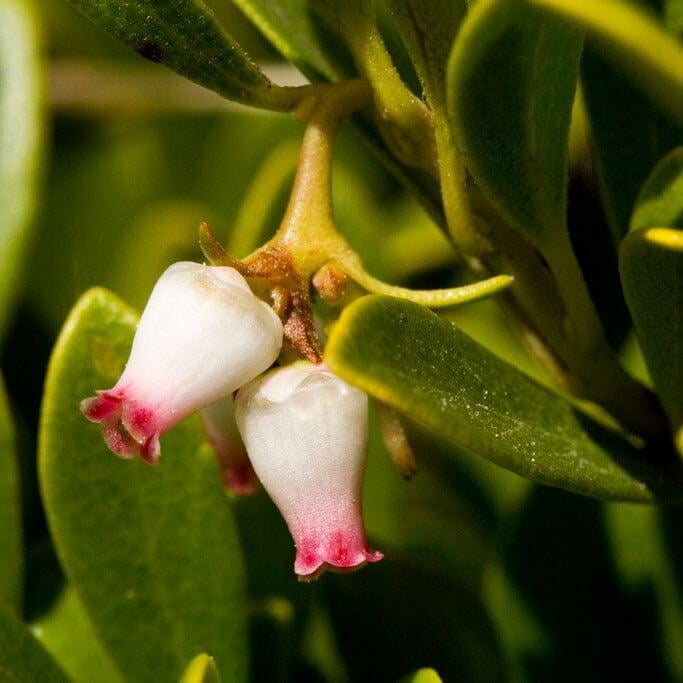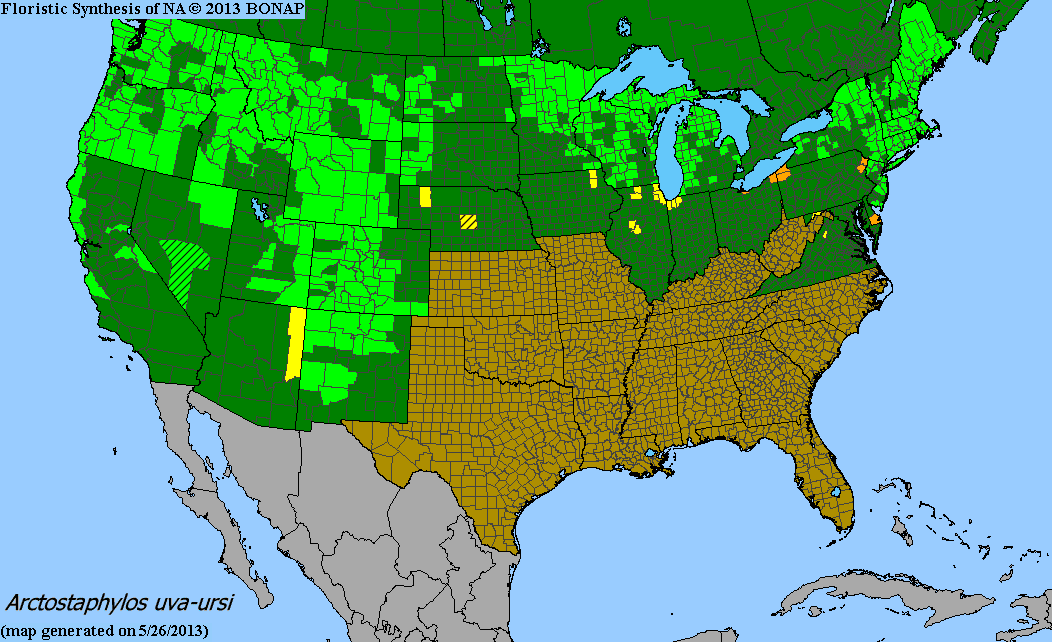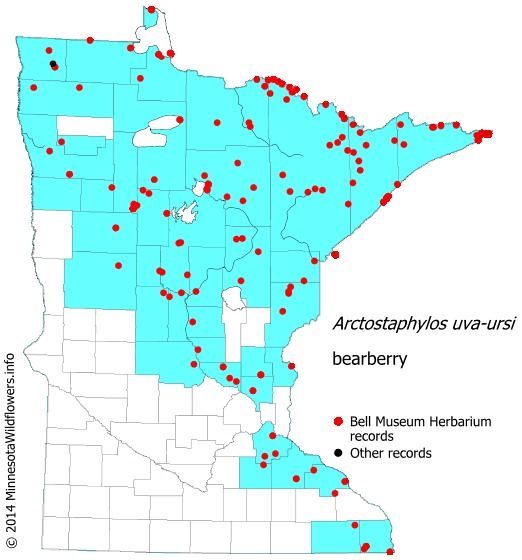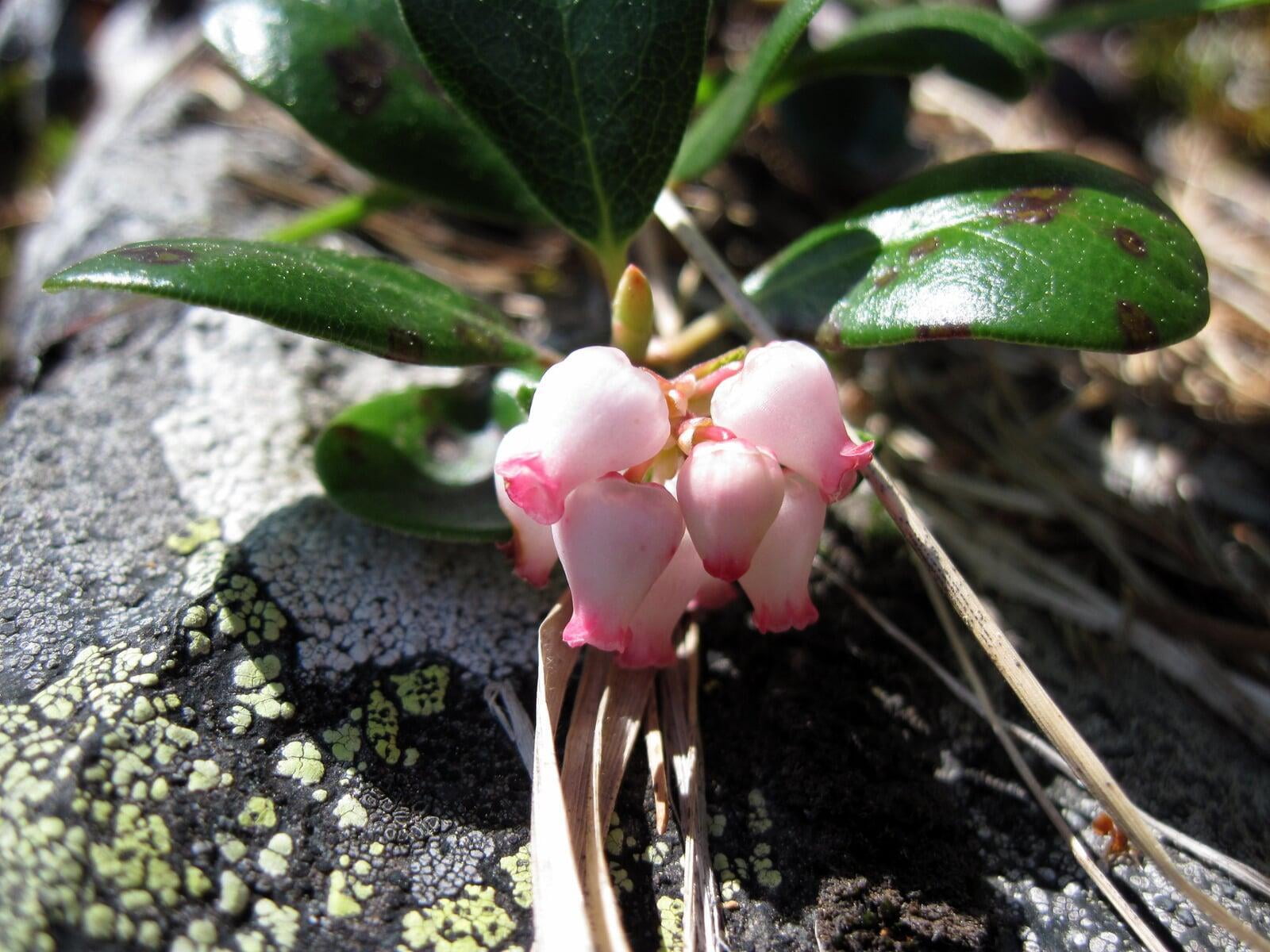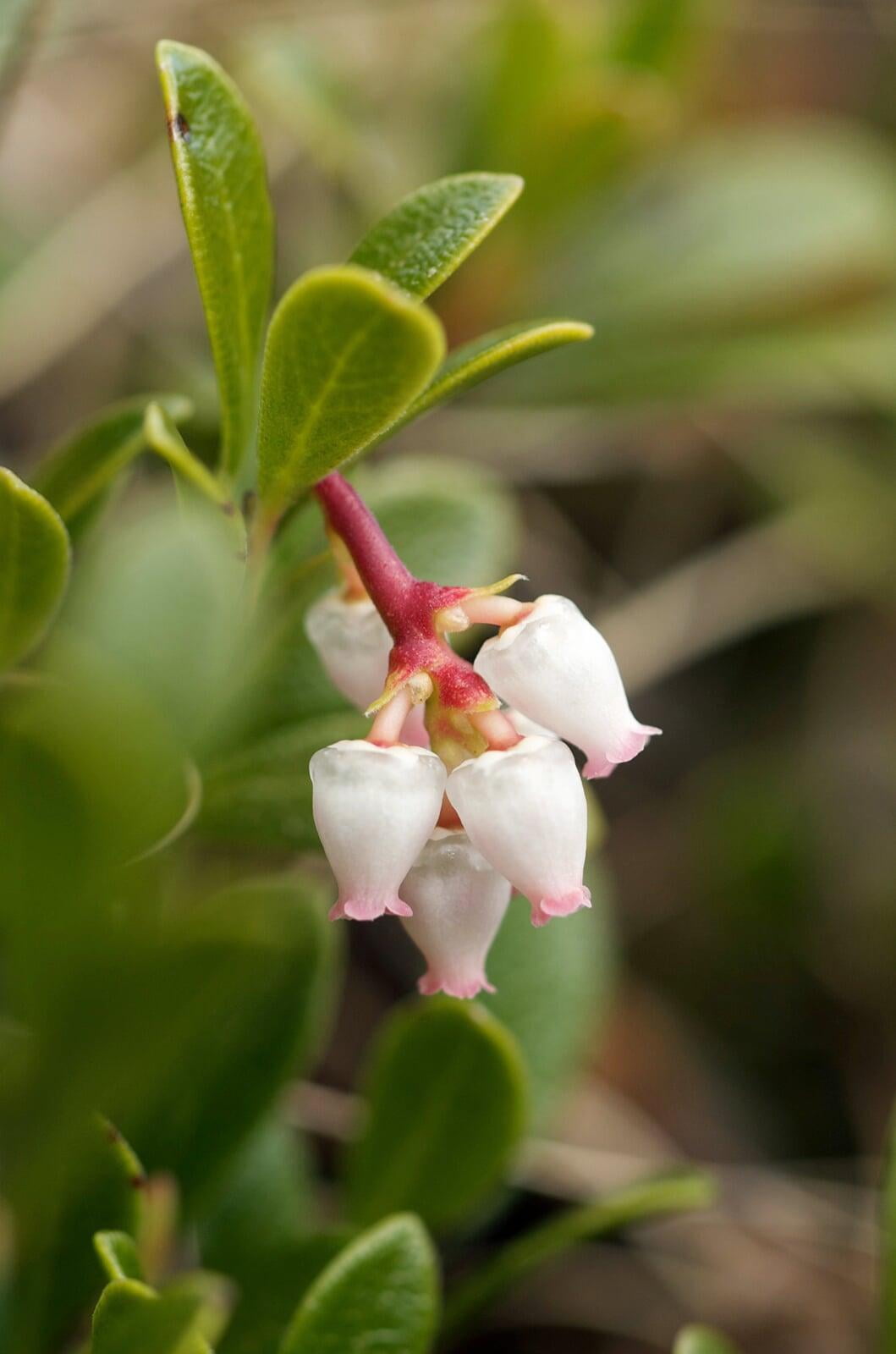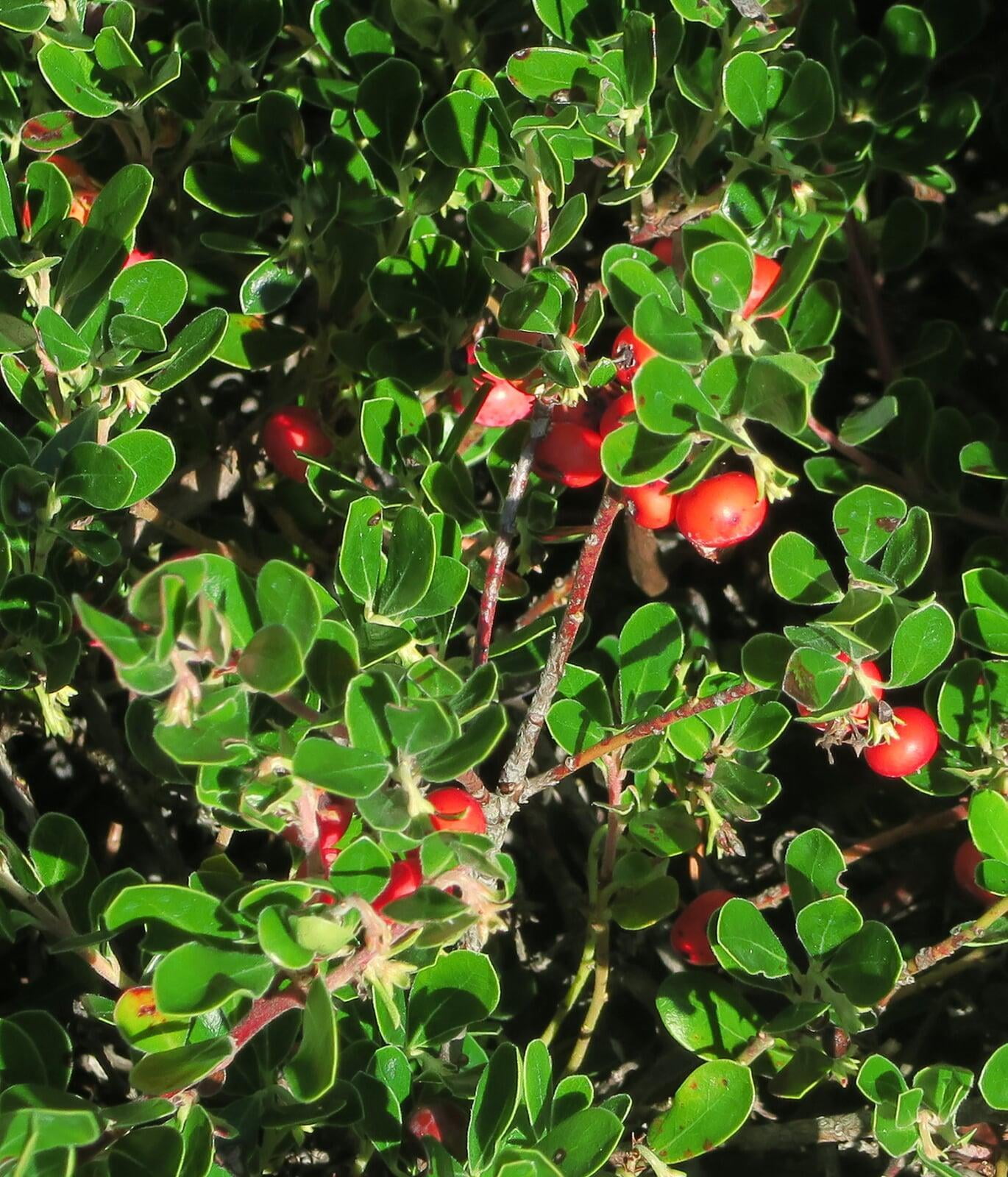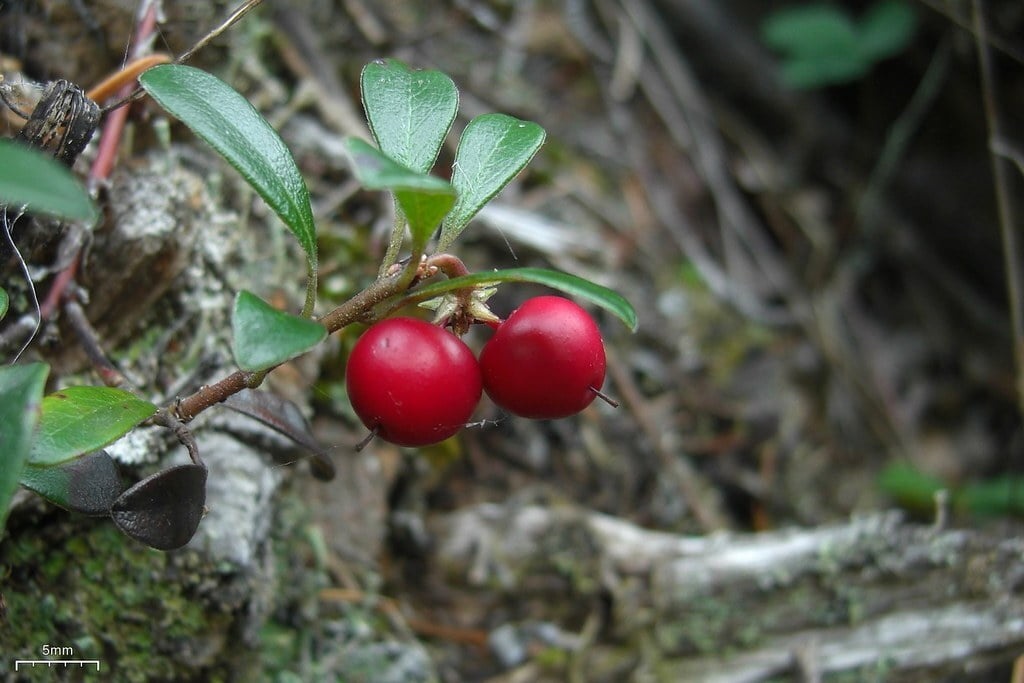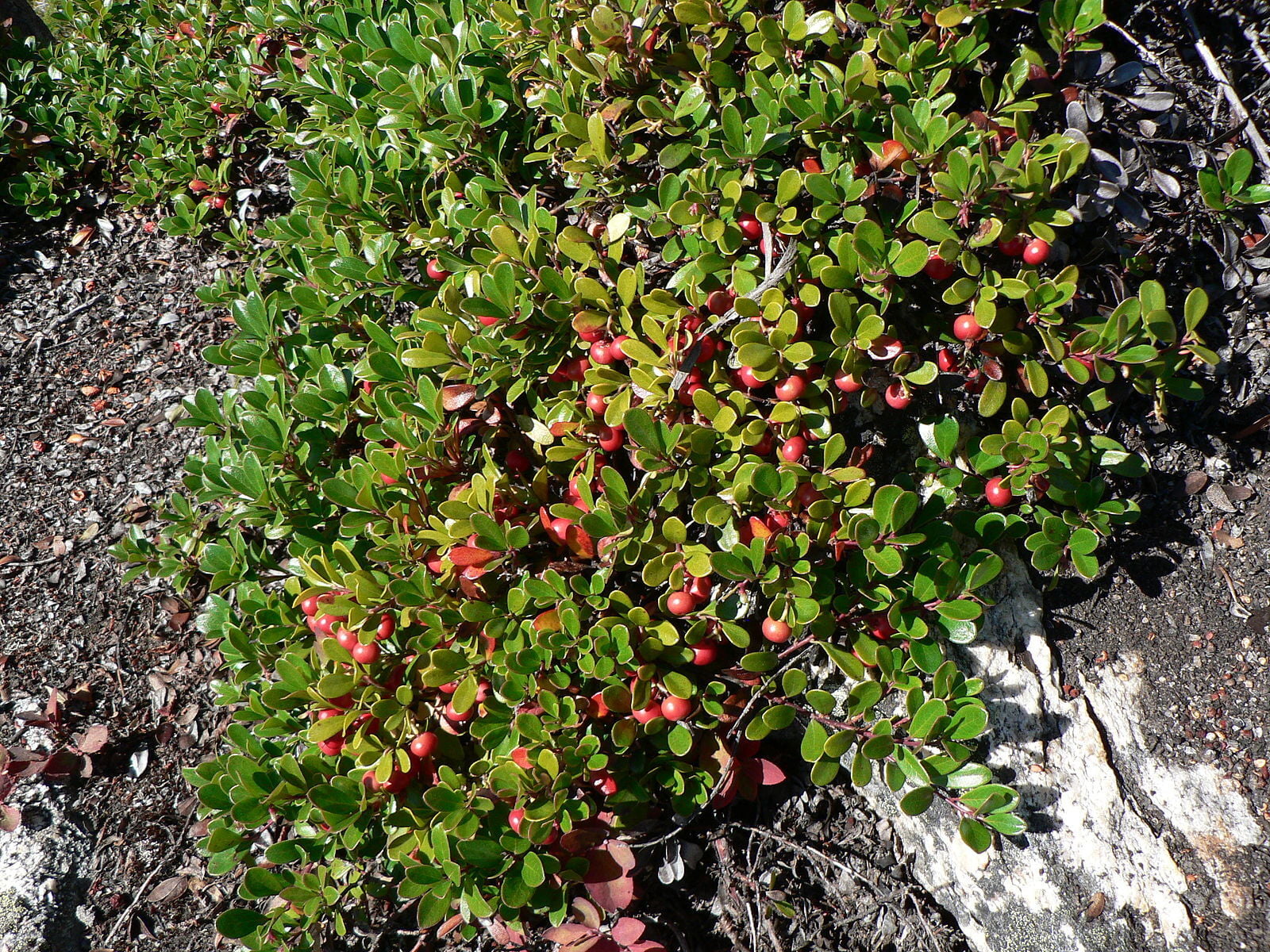Arctostaphylos uva-ursi
Bearberry Description:
Arctostaphylos uva-ursi, commonly known as uva-ursi or bearberry, is a low-growing evergreen shrub that belongs to the Ericaceae family. It is native to North America, Europe, and Asia, and can be found in a variety of habitats such as forests, tundra, and rocky hillsides.
The leaves of Arctostaphylos uva-ursi are oval in shape, about 1-3 cm long and 1-2 cm wide, and have a glossy, dark green color. The plant produces small, bell-shaped pink or white flowers in the spring, which later develop into small red berries that resemble cranberries.
Arctostaphylos uva-ursi has been used in traditional medicine for centuries, particularly for its diuretic and antibacterial properties. The leaves contain several active compounds, including hydroquinone, tannins, proanthocyanidins, flavonoids, and phenolic acids, which are believed to be responsible for its medicinal properties. It has been used to treat urinary tract infections, cystitis, and other bladder and kidney conditions.
However, it is important to note that Arctostaphylos uva-ursi should be used with caution, as it can cause side effects such as nausea, vomiting, and tinnitus if taken in large amounts or for extended periods. It is always recommended to consult with a healthcare professional before using any herbal supplement or traditional medicine.
Native Range:
Bearberry is a wide ranging plant, native to most states in the Western United States. That said, it does span across the country in the northern most states including Minnesota, Michigan, and Maine.
Standard Plant Information:
Plant Height: 4" - 8"
Bloom Time: May - June
Preferred Habitat: Does well in part shade to full sun. Prefers dry sandy or rocky soil conditions.
Sowing:
For most homeowners, the best option is to scatter seed on the ground by hand broadcasting at a minimum of 16-64 pls ounces per acre. For even coverage, we recommend that you broadcast seed in perpendicular rows across the site to ensure even coverage.
You’ll want to broadcast any grass seed first, which will get raked into the soil lightly. Next, it is ideal to mulch the area lightly with either a clean (no seed) straw or preferably with our native Little Bluestem straw, sold at our retail garden centers. After a light mulching is complete, now it’s time to broadcast your native wildflower seeds, which should not be raked into the soil. A good rain or watering is sufficient to cover the seed.
Planting:
Simply dig a hole in the soil slightly larger than the plant’s roots. Ensure that the soil line of the plant is maintained during the transfer (i.e. the plant should be at the same level with the ground as it was in the pot). Pack any loose dirt back around the plant and make sure you water it well the same day to ensure it has the best chance of survival.

